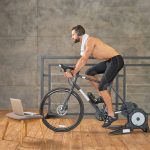As your baby transitions from bottle to solids, having a safe and supportive high chair becomes essential. It’s more than just a place for feeding—it’s where your child learns to sit up at the table, explore textures, and develop independence during mealtimes.
With countless options available, choosing the best high chair can feel like a major decision. From basic plastic models to stylish, multifunctional designs, the right high chair depends on your home, your baby’s needs, and your lifestyle. This guide walks you through everything you need to consider to make a confident choice.
1. Understand When Your Baby Is Ready
Most babies start using a high chair between 4 to 6 months, once they can sit up with minimal support and hold their head steady.
Signs Your Baby Is Ready:
-
Can sit upright with support
-
Shows interest in food
-
Good neck and head control
-
Reaches for and grasps objects
Starting with the right high chair at the right time helps encourage good posture and makes early feedings easier for both parent and child.
2. Know the Types of High Chairs
High chairs come in several styles, each offering different benefits depending on your space and how often you plan to use it.
Standard High Chairs
-
Classic upright models
-
Usually have a wide base and attached tray
-
Great for home use
-
Often less expensive and easy to clean
Convertible High Chairs
-
Grow with your child by converting into booster seats or toddler chairs
-
Cost more upfront but may last several years
-
Ideal for long-term value
Space-Saving High Chairs
-
Hook-on seats or boosters that attach to dining chairs
-
Perfect for small kitchens or travel
-
May not offer as much support for younger babies
Foldable High Chairs
-
Can be folded flat for easy storage
-
Useful for occasional use or apartment living
Think about where and how often you’ll use the high chair to determine which type suits your home best.
3. Prioritize Safety Features
Safety should always be the first consideration when choosing baby gear, and high chairs are no exception.
Must-Have Safety Features:
-
Five-point harness: Secures baby at shoulders, waist, and between the legs
-
Stable base: Wide legs or anti-tip design prevent tipping
-
Locking wheels (if mobile): Prevents unwanted movement
-
Certifications: Look for JPMA or ASTM safety certifications
Always read the manufacturer’s weight and age guidelines, and follow proper assembly instructions to ensure the chair is safe for your child.
4. Consider Ease of Cleaning
Feeding a baby is messy work—so your high chair needs to stand up to constant spills and sticky fingers.
Easy-to-Clean Features Include:
-
Removable trays that are dishwasher-safe
-
Smooth, wipeable surfaces with minimal crevices
-
Machine-washable seat pads or cushions
-
Water-resistant or stain-resistant fabrics
The easier it is to clean, the more you’ll enjoy using it—and the less likely food stains will build up over time.
5. Look for Adjustability and Comfort
A comfortable, adjustable high chair makes feeding time more enjoyable and can adapt as your baby grows.
Helpful Adjustments:
-
Height settings: Allows baby to sit at different table levels
-
Reclining seat: Useful for younger babies who are still mastering sitting upright
ADVERTISEMENT -
Adjustable footrest: Supports posture and comfort for growing legs
-
Removable tray: Lets baby sit closer to the family table as they get older
Proper ergonomic support promotes safe swallowing, good eating habits, and a more relaxed feeding experience.
6. Evaluate Size and Space
Your available space may influence the style and design of high chair you choose.
Small Space Solutions:
-
Look for compact or foldable models
-
Consider clip-on seats or chair-top boosters
-
Avoid wide-legged designs if floor space is limited
Larger kitchens and dining areas may accommodate full-size or more elaborate chairs with ease, but compact models often provide the same functionality with less bulk.
7. Think About Long-Term Use
Some high chairs only work for a few months, while others grow with your child for years.
Multi-Stage High Chairs:
-
Start as traditional high chairs
-
Convert into toddler seats, junior chairs, or even adult stools
-
Offer greater value over time, especially in families with multiple kids
If you’re planning to invest in a high chair just once, opt for a model that transitions with your child through different stages of development.
8. Match Style with Function
Today’s high chairs come in a wide range of styles to suit both function and aesthetics.
Popular Materials:
-
Plastic: Lightweight and easy to clean
-
Wood: More durable and often more stylish, though heavier
-
Metal: Sleek modern look, often paired with plastic trays or seats
Neutral colors and streamlined designs blend well with most home décor, while bold patterns may appeal to parents who want a fun pop of personality.
9. Portability and Travel Features
If you're often on the go or visit friends and family frequently, a travel-friendly high chair may be worth considering.
Travel-Friendly Features:
-
Lightweight and compact
-
Easy fold or collapse mechanisms
-
Included travel bags or straps
-
Can attach to tables or dining chairs safely
While not as supportive for everyday use, travel models are great for meals outside the home or for keeping at grandparents’ houses.
10. Set a Realistic Budget
High chair prices vary widely—from basic plastic models under $50 to designer wooden chairs over $300.
Typical Price Tiers:
-
Budget ($40–$80): Simple, easy-to-clean designs, often with fewer adjustments
-
Mid-range ($80–$150): Better materials, adjustability, and removable trays
-
Premium ($150+): Sleek aesthetics, multi-stage functionality, and more padding
When budgeting, think about how long you’ll use the chair, how much adjustability you need, and how important design is to you.
Pro Tips for High Chair Safety and Use
-
Never leave baby unattended: Even for a second, supervision is essential.
-
Use all harness straps: Buckle your baby in every time to prevent slipping or climbing.
-
Position on a level surface: Avoid placing high chairs on uneven or elevated surfaces.
-
Regularly check for recalls: Visit the manufacturer’s website or Consumer Product Safety Commission for updates.
-
Clean regularly: Remove food residue and sanitize trays to prevent bacteria buildup.
Safety, cleanliness, and routine use make feeding times safer, smoother, and more enjoyable.


